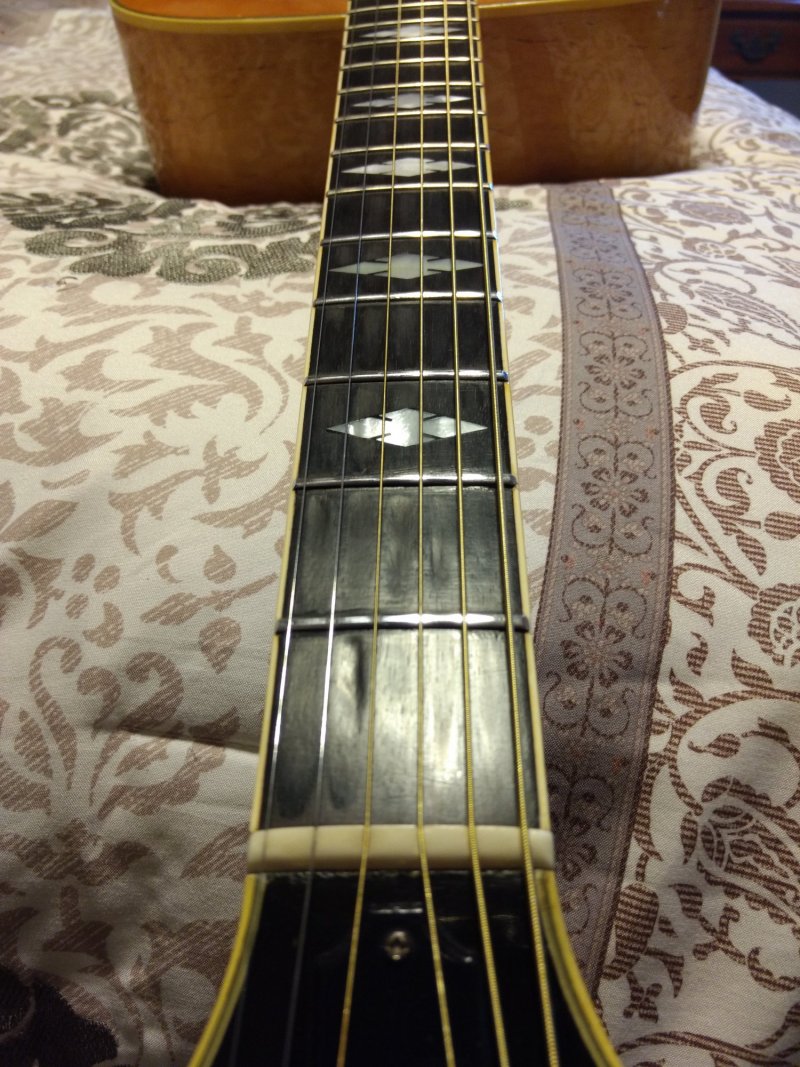So now I'm curious. How would one know? For example, I have had a PRS with ebony tuners, and my Sadowsky I have now has ebony tuners and an ebony TRC. In all of these examples, you could see some grain, etc. Certainly not totally black.
My Guild '84 D64, now in the very capable hands of wileypickett, had a very black ebony fretboard. Below is the best photo I have to try to show it, but are you all saying that even Guild could have made their ebony darker?
As you can see from the fretboard divots, it's very black all the way through.

walrus
My Guild '84 D64, now in the very capable hands of wileypickett, had a very black ebony fretboard. Below is the best photo I have to try to show it, but are you all saying that even Guild could have made their ebony darker?
As you can see from the fretboard divots, it's very black all the way through.

walrus